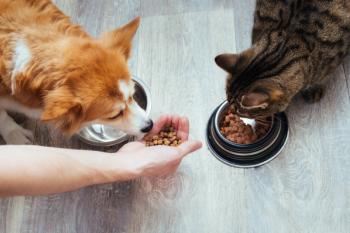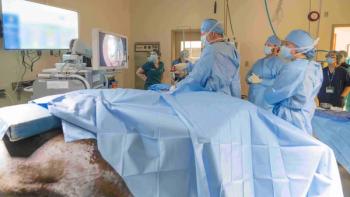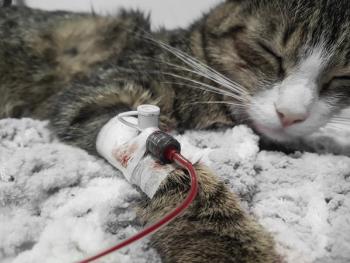
Practical Matters: Use caution when performing fine-needle aspiration biopsy of ventral neck masses in dogs
Using ultrasound guidance to perform fine-needle aspiration biopsy is preferred for tumors of the neck.
When deciding how to evaluate a subcutaneous ventral cervical mass in a dog, fine-needle aspiration biopsy followed by cytologic examination likely comes to mind as a quick and informative diagnostic test. Fine-needle aspiration biopsy of most masses in dogs is simple to perform and can be done without sedation, and cytologic examination provides rapid results. However, masses in the ventral cervical area of dogs, which may originate from the thyroid gland, are usually highly vascular and may even invade the jugular vein or carotid sheath.1 Fine-needle aspiration biopsy of thyroid tissue is likely to cause hemorrhage, which often leads to a nondiagnostic sample because of hemodilution.2 Fine-needle aspiration biopsy of a thyroid tumor can also, although rarely, lead to severe and even life-threatening hemorrhage.
Using ultrasound guidance to perform fine-needle aspiration biopsy is preferred for tumors of the neck, helping you avoid large vessels and distinguish thyroid gland tumors from other masses such as enlarged lymph nodes, abscesses, salivary mucoceles, granulomas, or neoplasia involving other tissues.3 Aspirates are most often performed with 21-to 23-ga needles. Do not redirect the needle during aspiration, as doing so may contribute to further hemorrhage.2 After obtaining an ultrasound-guided needle aspirate of a cervical mass, it is important to apply digital pressure to the aspiration site and monitor the area for bleeding or fluid pocket formation.
If you do not have access to an ultrasound machine, refer the patient to a specialist to obtain samples for cytologic examination. If hemodilution is avoided and samples are of adequate cellularity, it is often possible to achieve a diagnosis from cytologic samples that are reviewed by a clinical pathologist.2
REFERENCES
1. Barber LG. Thyroid tumors in dogs and cats. Vet Clin North Am Small Anim Pract 2007;37:755-773.
2. Thompson EJ, Stirtzinger T, Lumsden JH, et al. Fine needle aspiration cytology in the diagnosis of canine thyroid carcinoma. Can Vet J 1980;21(6):186-188.
3. Feldman EC, Nelson RW. Canine thyroid tumors and hyperthyroidism. In: Feldman EC, Nelson RW, eds. Canine and feline endocrinology and reproduction. 3rd ed. St. Louis, Mo: Saunders, 2004;219-249.
Newsletter
From exam room tips to practice management insights, get trusted veterinary news delivered straight to your inbox—subscribe to dvm360.




